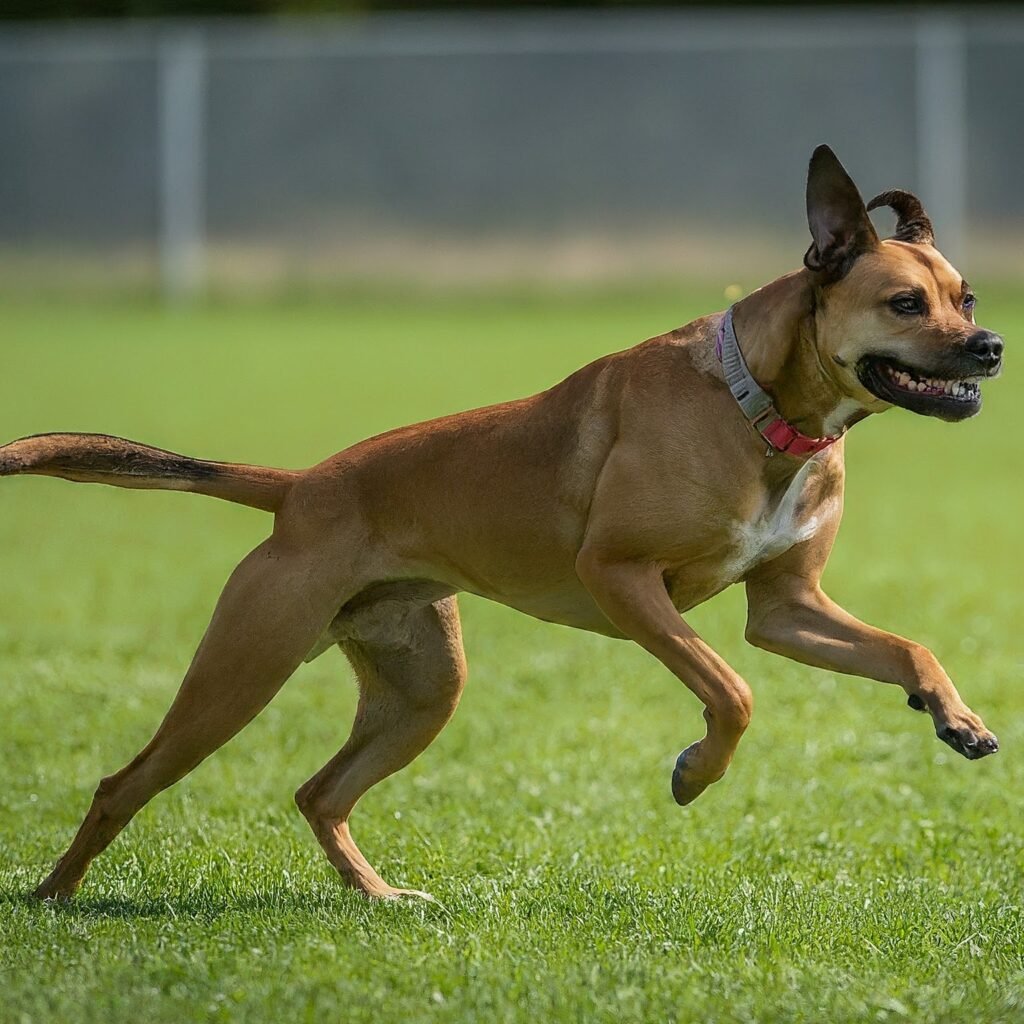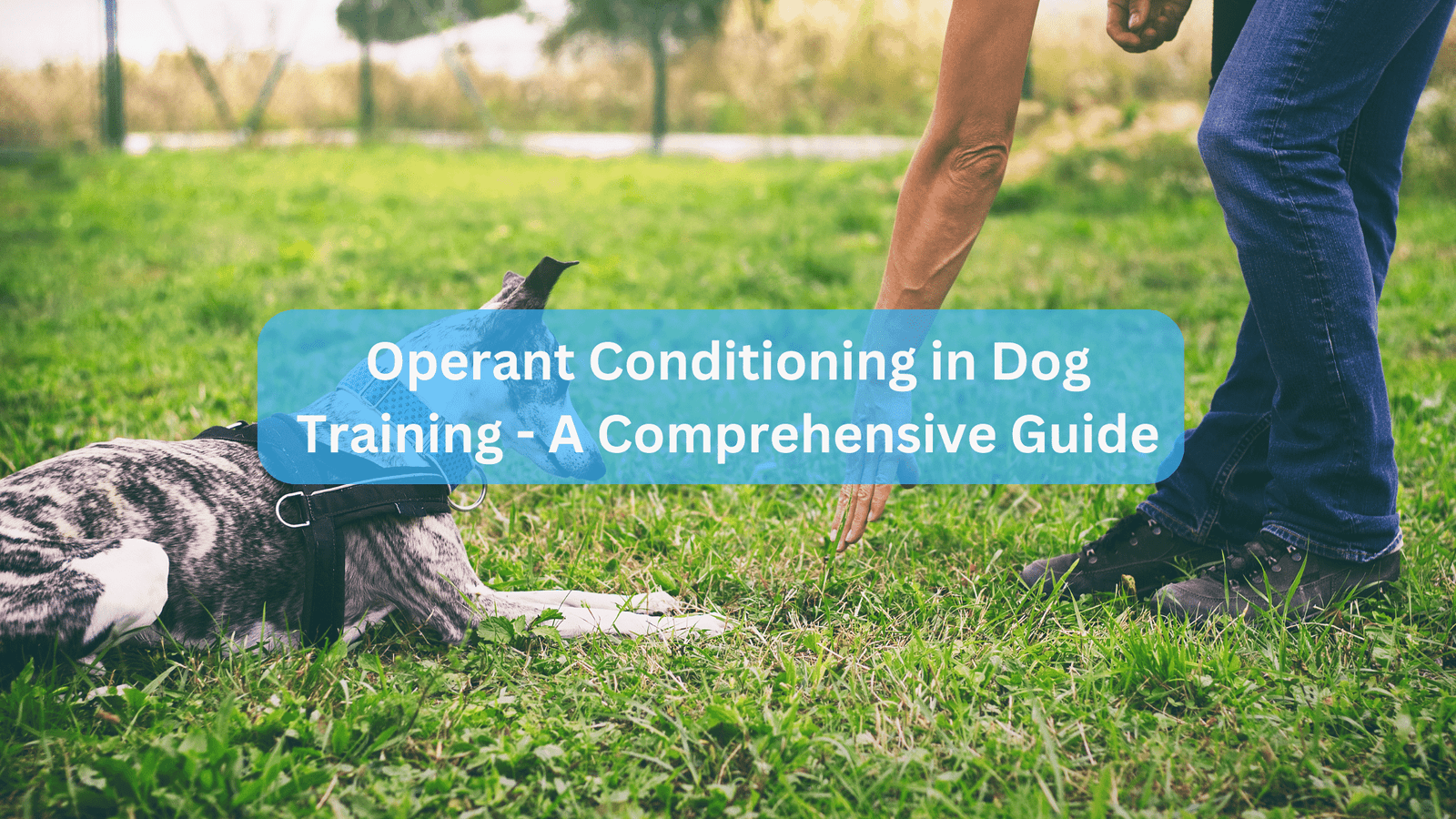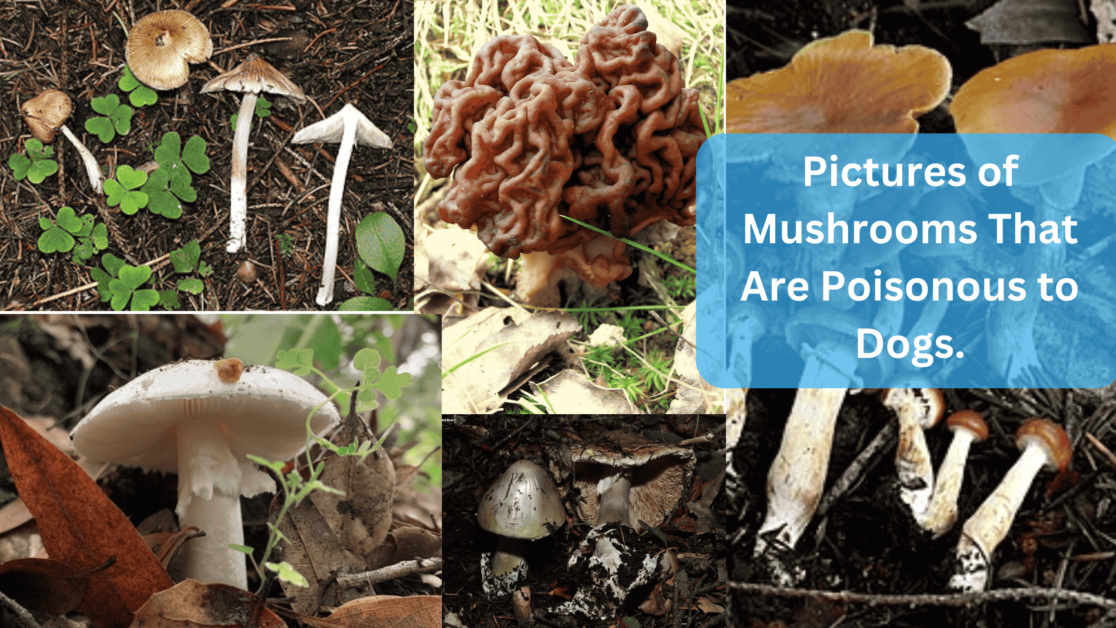Operant Conditioning in Dog Training – Operant conditioning is a fundamental principle in dog training that helps shape a dog’s behavior through the use of rewards and consequences.
Developed by psychologist B.F. Skinner, this method emphasizes the relationship between behavior and its outcomes, making it a cornerstone of effective training techniques.
This guide explores the intricacies of operant conditioning, its applications in dog training, and how to implement it effectively.
What is Operant Conditioning?

Operant conditioning is a learning process where behaviors are modified based on the consequences that follow them.
It operates on the premise that behaviors followed by positive outcomes are likely to be repeated, while those followed by negative outcomes are less likely to recur.
This framework allows trainers to effectively communicate expectations to dogs and encourage desirable behaviors.
For example, if a dog sits when you say “sit” and you reward them with a treat, they are more likely to repeat the sitting behavior in the future when given the same cue.
On the other hand, if a dog jumps up on people and is ignored or scolded, they are less likely to jump up again, as the behavior was not followed by a positive outcome.
The Four Quadrants of Operant Conditioning
Understanding the four quadrants of operant conditioning is crucial for effective dog training:
- Positive Reinforcement: Adding a pleasant stimulus to encourage a behavior. For example, giving a treat when a dog sits on command.
- Negative Reinforcement: Removing an unpleasant stimulus to increase a behavior. For instance, stopping a gentle pressure on a harness when the dog stops pulling on the leash.
- Positive Punishment: Adding an unpleasant stimulus to decrease a behavior. An example would be using a loud noise to interrupt a dog that is chewing on furniture.
- Negative Punishment: Removing a pleasant stimulus to reduce a behavior. For example, taking away a toy when a dog jumps up for attention.
Each quadrant has its purpose and can be used effectively depending on the training goals.
How to Apply Operant Conditioning in Dog Training
Positive Reinforcement Techniques
Positive reinforcement is the most widely accepted and effective method for training dogs. It fosters a trusting relationship between the dog and the trainer. Here’s how to implement it:
- Identify Desired Behaviors: Determine which behaviors you want to encourage, such as sitting, staying, or coming when called.
- Use High-Value Rewards: Choose treats or toys that your dog finds particularly motivating. This could be their favorite snack or a beloved toy.
- Immediate Reinforcement: Provide the reward immediately after the desired behavior occurs. This helps the dog make the connection between the behavior and the reward.
- Consistency is Key: Be consistent with your cues and rewards. This helps reinforce learning and builds the dog’s confidence.
Negative Reinforcement Techniques
While less common than positive reinforcement, negative reinforcement can be effective when used appropriately:
- Identify the Unpleasant Stimulus: This could be pressure on a leash or harness when the dog pulls.
- Apply and Remove Pressure: For example, apply gentle pressure when the dog pulls and release it as soon as the dog stops pulling. This teaches the dog that walking calmly results in a more comfortable experience.
Using Punishment Wisely
Punishment can be a controversial topic in dog training. It’s essential to approach it with caution:
- Immediate and Clear: If using positive punishment, ensure it is immediate and clearly linked to the undesired behavior. For instance, a firm “no” when the dog chews on furniture.
- Redirect Attention: After punishing, redirect the dog to an appropriate behavior or toy. This helps them learn what is acceptable.
- Avoid Harsh Methods: Punishment should never involve physical harm or intimidation. The goal is to discourage behavior, not to instill fear.
Combining Techniques
Many trainers find success by combining various techniques.
For example, using positive reinforcement to encourage good behavior while applying negative punishment to discourage unwanted actions can create a balanced training approach.
Additionally, integrating operant conditioning with classical conditioning can enhance training effectiveness.
Example: When teaching a dog to sit, you can use a clicker (operant conditioning) to mark the behavior as it happens.
Simultaneously, you can pair the clicker sound with a treat (classical conditioning), so the dog learns to associate the sound with a reward.
Over time, the clicker itself becomes a cue that elicits a positive response, reinforcing the behavior more effectively.
Common Misconceptions About Operant Conditioning
Understanding operant conditioning also involves debunking common myths:
- Myth 1: Treats are Bribery: Using treats is not bribery; it’s a motivational tool. Over time, the reliance on treats can be reduced as behaviors become habitual.
- Myth 2: Only Punishment Works: Many believe that punishment is the most effective way to train dogs. However, studies show that positive reinforcement builds trust and strengthens the bond between dog and owner.
- Myth 3: Some Dogs Can’t Be Trained: All dogs can learn; the key is understanding their unique motivators and adapting training methods accordingly.
In addition, many people wonder how positive reinforcement differs from negative reinforcement in operant conditioning.
Positive reinforcement adds a pleasant stimulus to encourage a behavior, while negative reinforcement removes an unpleasant stimulus to increase a behavior.
Best Practices for Using Operant Conditioning with a Reactive Dog
When working with a reactive dog, it’s crucial to apply operant conditioning techniques thoughtfully:
- Use High-Value Rewards: Reactive dogs may need more motivation to focus, so use treats or toys that they find particularly enticing.
- Gradual Exposure: Slowly introduce the dog to triggers while reinforcing calm behavior, ensuring they do not become overwhelmed.
- Seek Professional Guidance: If you’re unsure how to proceed, consider working with a qualified trainer who specializes in reactive dogs.
Tailoring Operant Conditioning Techniques to Your Dog’s Personality
Every dog is unique, and tailoring operant conditioning techniques to your dog’s individual personality is essential for success.
- Identify Motivators: Observe what excites your dog—food, play, or praise—and use that as a reward.
- Adjust Your Approach: Some dogs may respond better to gentle encouragement, while others may thrive with more enthusiastic praise.
- Be Patient: Understand that every dog learns at their own pace, and be prepared to adapt your methods as needed.
Also Read: Can Dogs Eat Dragon Fruit? A Comprehensive Guide
Also Read: Can Dogs Eat Dosa? Myths, Facts, and the Reassuring Truth
Conclusion
Operant conditioning is a powerful framework for dog training that emphasizes the importance of consequences in shaping behavior.
By understanding and applying the principles of positive and negative reinforcement, as well as punishment, dog owners can effectively train their pets in a humane and effective manner.
Remember, the ultimate goal is to foster a positive relationship with your dog while teaching them desirable behaviors.
With patience, consistency, and the right techniques, any dog can learn and thrive.
Sources:
- https://petcoach.sg/operant-conditioning-dog-training/
- https://www.dognerdly.com/training/how-to-use-classical-conditioning-in-dog-training/
- https://www.dognerdly.com/training/operant-conditioning-in-dog-training/
- https://www.caninescholars.com/learning-principles/operant-conditioning/
- https://www.akc.org/expert-advice/training/operant-conditioning-positive-reinforcement-dog-training/
- https://www.thrivingcanine.com/blog/classical_operant_conditioning/
- https://www.linkedin.com/pulse/dispelling-dog-training-myths-facts-behind-positive-uhde-ph-d-







